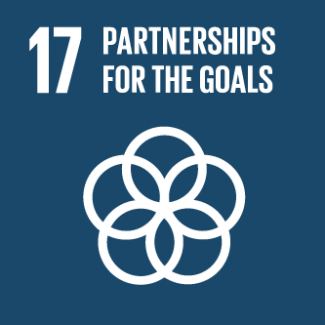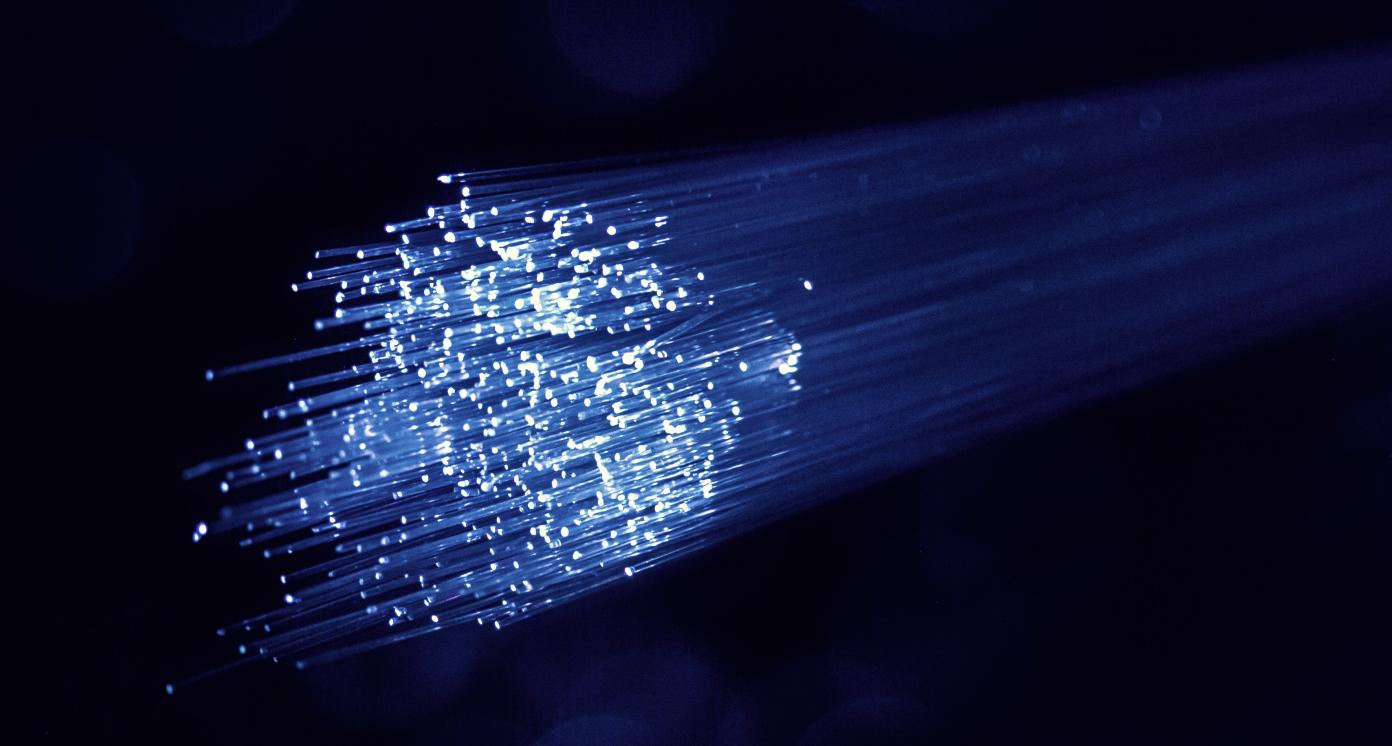Decentralized ICT broadband distribution infrastructure







Business Model Description
Direct capital investments in standalone WiFi stations in public areas, offered to users for free and sold to sponsors in exchange for advertisement space and securely captured data
Expected Impact
Broaden internet access to the base of the socioeconomic pyramid
How is this information gathered?
Investment opportunities with potential to contribute to sustainable development are based on country-level SDG Investor Maps.
Disclaimer
UNDP, the Private Finance for the SDGs, and their affiliates (collectively “UNDP”) do not seek or solicit investment for programmes, projects, or opportunities described on this site (collectively “Programmes”) or any other Programmes, and nothing on this page should constitute a solicitation for investment. The actors listed on this site are not partners of UNDP, and their inclusion should not be construed as an endorsement or recommendation by UNDP for any relationship or investment.
The descriptions on this page are provided for informational purposes only. Only companies and enterprises that appear under the case study tab have been validated and vetted through UNDP programmes such as the Growth Stage Impact Ventures (GSIV), Business Call to Action (BCtA), or through other UN agencies. Even then, under no circumstances should their appearance on this website be construed as an endorsement for any relationship or investment. UNDP assumes no liability for investment losses directly or indirectly resulting from recommendations made, implied, or inferred by its research. Likewise, UNDP assumes no claim to investment gains directly or indirectly resulting from trading profits, investment management, or advisory fees obtained by following investment recommendations made, implied, or inferred by its research.
Investment involves risk, and all investments should be made with the supervision of a professional investment manager or advisor. The materials on the website are not an offer to sell or a solicitation of an offer to buy any investment, security, or commodity, nor shall any security be offered or sold to any person, in any jurisdiction in which such offer would be unlawful under the securities laws of such jurisdiction.
Country & Regions
- Brazil: Pará
- Brazil: Bahia
- Brazil: Minas Gerais
- Brazil: Goiás
Sector Classification
Infrastructure
Development need
Brazil is held back by chronic underinvestment in infrastructure spending only 2.5% of GDP (2) This leads to critical structural inefficiencies: deficient existing transmission lines are responsible for a 20% energy loss (5); lack of investment in wastewater treatment is responsible for epidemics in over 1/3 of Brazilian households (6)
Policy priority
Infrastructure development is a top priority for the new administration, who has pledged to invest nearly US$ 50 billion in infrastructure in 2019 alone (vs. e.g., US$ 7 billion in 2018) (3) (4)
Gender inequalities and marginalization issues
Poor access to core infrastructure
services forces women to allocate a large fraction of their
available time to family chores (7)
Investment opportunities introduction
New administration's infrastructure development pledge means closer collaboration with private investors (e.g., continuity of PPI program and concessions timeline from past to current administration)
Key bottlenecks introduction
Licensing, funding for land acquisitions, capital requirements
Infrastructure
Development need
Only 54% of Brazilians are connected to the Internet, in rural Brazil, 26% of citizens are connected. (8)(9)Mobile broadband costs on average 12% of income for the poorest 20% of Brazilians, well above the affordability threshold of 5% set by the UN Broadband Commission (12)
Policy priority
The digital economy is a top priority for the current administration, both as a means of improving economic productivity and expanding access to services (22)
Gender inequalities and marginalization issues
Across LMICs, women are eight per cent less likely than men to own a mobile phone, the gap widens significantly for mobile internet use: women are 20 per cent less likely than men to use the internet on a mobile phone (8)
Investment opportunities introduction
Fiscal and financial incentives directed towards the establishment of high-tech (specifically IoT) industry (27) (28)
Key bottlenecks introduction
affordability is a barrier to internet adoption for 37% of non-internet users in Brazil (13)
Engineering and Construction Services
Pipeline Opportunity
Decentralized ICT broadband distribution infrastructure
Direct capital investments in standalone WiFi stations in public areas, offered to users for free and sold to sponsors in exchange for advertisement space and securely captured data
Business Case
Market Size and Environment
Market potential of 54.7 million additional users (16)
Market potential of 54.7 million additional users (16) The market potential for deploying improved connectivity could rise to 54.7 million currently unaddressed users 10 years or older nationwide; of these, 14 million have general knowledge of how to use the internet but no access to it (16)
Indicative Return
20% - 25%
Rates of return in the Brazilian context have not been made public, with the model only initially deployed in June 2019
From benchmark case studies outside of Brazil, return potential depends on the component/service the investor is investing in: direct investment in WiFi hotspot infrastructure (seen in Brazil to total US$ 50-100K per location [17]) has yielded IRRs of 17-30% (19)
Return on sponsorship investment will vary dramatically by scale and nature of advertising model
Investment Timeframe
Short Term (0–5 years)
The model has already begun deployment, including: the setup of local partnerships with telecommunications (fibre) providers and corporate sponsors; the overcoming of initial regulatory (including data protection) obstacles; and the initial construction of physical connectivity ports (17)
Ticket Size
USD 1 million - USD 10 million
Market Risks & Scale Obstacles
Business - Supply Chain Constraints
Impact Case
Sustainable Development Need
Only 54% of Brazilians are connected to the Internet, but in rural Brazil, 26% of citizens are connected (9)(10). Internet speed in Brazil is lower than in regional peers (1) (2)
Moreover, mobile broadband costs on average 12% of income for the poorest 20% of Brazilians, well above the affordability threshold of 5% set by the UN Broadband Commission (12)
In addition, affordability is a barrier to internet adoption for 37% of non-internet users in Brazil, the highest in the region behind Mexico and Colombia (13)
Gender & Marginalisation
Across LMICs, women are eight per cent less likely than men to own a mobile phone, the gap widens significantly for mobile internet use: women are 20 per cent less likely than men to use the internet on a mobile phone (8)
Expected Development Outcome
Broaden internet access to the base of the population pyramid Improve productivity and generate economic growth: a 10% of increase in broadband penetration could generate annual growth in GDP per capita by 0.9-1.5 percentage points (3)
Give mobile operators a channel for offloading excess data traffic from cellular networks
Improve reliability of connectivity, encouraging businesses to base operations in the country and spurring the growth of new markets (18) (in other markets, this model has garnered strong potential for positive spillover effects for the broader telecommunications sector [20])
Gender & Marginalisation
Contribute to narrowing the digital gender gap
Primary SDGs addressed

9.c.1 Proportion of population covered by a mobile network, by technology
Proportion of population covered by at least a 2G mobile network 96.58(%) (2018) (32)
100%

17.6.1 Fixed Internet broadband subscriptions per 100 inhabitants, by speed
Fixed Internet broadband subscriptions per 100 inhabitants by speed: 10 MBPS: 7.76, 256KT2MBPS: 2.44, 2MT 10MBPS: 4.71, ANYS: 14.91 (2018) (32)
N/A
Secondary SDGs addressed





Directly impacted stakeholders
People
Indirectly impacted stakeholders
People
Outcome Risks
If expanded too quickly in structurally weak locations (i.e., with poor underlying fibre infrastructure), model could generate potential strain on the ICT grid and possibly slow down connection speeds
Expanded internet use could create 'screen addiction' or internet overuse, with public health ramifications: over 50% of Brazilian internet exhibit risk of excess in their internet consumption (21)
Impact Risks
Execution risk: expanding ICT too quickly and in structurally weak locations can generate strains on grid systems and slow down connection
Unexpected impact risk: internet overuse leading to screen addiction
External risk: reliance on underlying broadband infrastructure can disrupt ability to deliver expected impact
Impact Classification
What
WiFi stations could broaden internet access to the base of the socioeconomic pyramid, allowing them to access potentially formative contents
Who
Individuals with lower education levels, who are correlated with those without access to internet connectivity, are largely underserved due to expensive data plans or lack of network coverage
Risk
External factors such as reliance on underlying broadband infrastructure may disrupt the ability of this opportunity to deliver the expected impact
Impact Thesis
Broaden internet access to the base of the socioeconomic pyramid
Enabling Environment
Policy Environment
(Decree for a national IoT plan): issued as part recent policy positions in favor of liberalizing the ICT market (23)
(National Digital Strategy): carried over from past administrations, emphasizes: a data-based economy; the expansion of connected devices; new digital business models; and enhanced digital interaction between citizens and government (24)
Financial Environment
Financial incentives: Fiscal and financial incentives in the sector have been primarily directed towards the establishment of high-tech (specifically IoT) industry (27) (28)
Other incentives: BNDES has launched lending initiatives focused on broadening internet access to more rural populations (29)
Regulatory Environment
(Marco Civil, Brazil's 'Internet Bill of Rights): regulates internet and data use, covering a broad range of topics such as privacy, freedom of expression, liability of internet intermediaries and network neutrality, this is a law that can be directly enforced by judges (25)
The Ministry of Communications; ANATEL, Brazil's telecommunications regulatory body; and ANCINE: regulating agencies of telecommunications and content distribution (26)
Telecommunications services do not face specific restrictions for foreign investment (26)
Marketplace Participants
Private Sector
Local telecoms companies like Linktel and America Net, Itau
Government
City of Sao Paulo
Multilaterals
Google (providing on-site connectivity technology through its Google Station platform)
Target Locations
Brazil: Pará
Brazil: Bahia
Brazil: Minas Gerais
Brazil: Goiás
References
- (1) Bertelsmann Stiftung, 2019, https://dashboards.sdgindex.org/#/BRA
- (2) World Bank, 2019, https://www.worldbank.org/en/news/feature/2019/06/19/lifelines-for-better-development?cid=ECR_LI_worldbank_EN_EXT
- (3) Globo, 2019, https://g1.globo.com/economia/noticia/2019/02/10/investimento-do-governo-em-infraestrutura-no-ano-passado-e-o-menor-em-dez-anos.ghtml
- (4) Correio Braziliense, 2018, https://www.correiobraziliense.com.br/app/noticia/economia/2018/11/02/internas_economia,717118/novo-governo-planeja-viabilizar-investimentos-e-r-180-bi-na-infraestr.shtml
- (5) OECO, 2012, https://www.oeco.org.br/noticias/26650-brasil-perde-20-de-energia-nas-linhas-de-transmissao/
- (6) Correio da Bahia, 2018, https://www.correio24horas.com.br/noticia/nid/mais-de-50-dos-municipios-baianos-tem-problemas-de-saude-por-falta-de-saneamento/
- (7) Agénor, Pierre-Richard, and Otaviano Canuto. 2013. “Gender Equality and Economic Growth in Brazil.” The World Bank, https://ems.gtc.ox.ac.uk/sites/ems.gtc.ox.ac.uk/files/EP109.pdf
- (8) GSMA. 2020. ""Connected Women The Mobile Gender Gap Report 2020,"" https://www.gsma.com/mobilefordevelopment/wp-content/uploads/2020/05/GSMA-The-Mobile-Gender-Gap-Report-2020.pdf
- (9) BNDES, 2017, https://web.bndes.gov.br/bib/jspui/bitstream/1408/16040/3/PRLiv214078_Visao_2035_compl_P.pdf
- (10) Akamai, 2017, https://www.akamai.com/fr/fr/multimedia/documents/state-of-the-internet/q1-2017-state-of-the-internet-connectivity-report.pdf
- (11) IBEI, 2015, https://www.ibei.org/regional-inequalities-in-the-impact-of-broadband-on-productivity-evidence-from-brazil_82139.pdf
- (12) GSMA, 2016 https://www.gsma.com/publicpolicy/wp-content/uploads/2016/09/GSMA2016_Report_Summary_DigitalInclusionAndMobileSectorTaxationInBrazil_English.pdf
- (13) GSMA, 2016, https://www.gsmaintelligence.com/research/?file=895f6c0a1efa7a25f5d6b4ff874e92f1&download
- (14) Anatel, 2019, https://diariodonordeste.verdesmares.com.br/editorias/negocios/ce-entre-os-tres-estados-com-mais-fibra-otica-e-melhor-velocidade-1.2079475
- (15) Núcleo de Informação e Coordenação do Ponto Brasil, 2018, https://cetic.br/media/docs/publicacoes/1/Estudo%20Banda%20Larga%20no%20Brasil.pdf
- (16) IBGE, 2018, https://g1.globo.com/economia/tecnologia/noticia/2018/12/20/numero-de-internautas-cresce-em-cerca-de-10-milhoes-em-um-ano-no-brasil-aponta-ibge.ghtml
- (17) Teletime, 2019, https://teletime.com.br/06/06/2019/plataforma-de-wi-fi-comunitario-google-station-e-oficializada-no-brasil/
- (18) Eastern Ontario Regional Network, 2016, https://www.eorn.ca/en/resources/Municipal-Wi-Fi/EORN_WP_WiFi_FINAL.pdf
- (19) Tellus Venture Associates, 2006, https://www.tellusventure.com/downloads/MuniWirelessROI.pdf
- (20)Economic Times, 2018, https://economictimes.indiatimes.com/tech/internet/public-wifi-to-contribute-20-billion-to-indias-gdp-by-2019-study/articleshow/64856557.cms?from=mdr
- (21) BBC, 2017, https://www.bbc.com/portuguese/brasil-41922087
- (22) Folha de Sãao Paulo, 2019, https://www1.folha.uol.com.br/mercado/2019/06/bolsonaro-vai-discursar-sobre-inovacao-digital-no-g20.shtml
- (23) BNAmericas, 2019, https://www.bnamericas.com/en/news/brazil-issues-decree-for-national-iot-plan
- (24) Ministério da Ciência, 2019, https://www.mctic.gov.br/mctic/opencms/inovacao/paginas/politicasDigitais/estrategia_digital/_brasileira/Estrategia_Digital_Brasileira.html
- (25) Theory and Practice of Legislation, 2017, https://itsrio.org/wp-content/uploads/2017/01/Notes-on-the-creation-and-impacts-of-Brazil-s-Internet-Bill-of-Rights.pdf
- (26) International Comparative Legal Guides, 2019, https://iclg.com/practice-areas/telecoms-media-and-internet-laws-and-regulations/brazil
- (27) Ministério da Ciência, 2019, http://www.mctic.gov.br/mctic/opencms/tecnologia/incentivo_desenvolvimento/index.html
- (28) Convergência Digital, 2018, https://www.convergenciadigital.com.br/cgi/cgilua.exe/sys/start.htm?UserActiveTemplate=site&infoid=48364&sid=7
- (29) Ricardo Alfonsin Advogados, 2019, https://alfonsin.com.br/bndes-apresenta-cna-linhas-de-crdito-para-conectividade-e-energia-renovvel/
- (30) IBGE ODS, 2019, https://indicadoresods.ibge.gov.br/objetivo6/indicador611
- (31) GSMA. 2016. “Connected Society Digital inclusion in Latin Americaand the Caribbean.” https://www.gsma.com/mobilefordevelopment/wp-content/uploads/2015/02/Connected-Society-Digital-inclusion-in-Latin-America-and-the-Caribbean-1.pdf
- (32) United Nations Global SDG Database. “SDG Indicators.” https://unstats.un.org/sdgs/indicators/database/.















